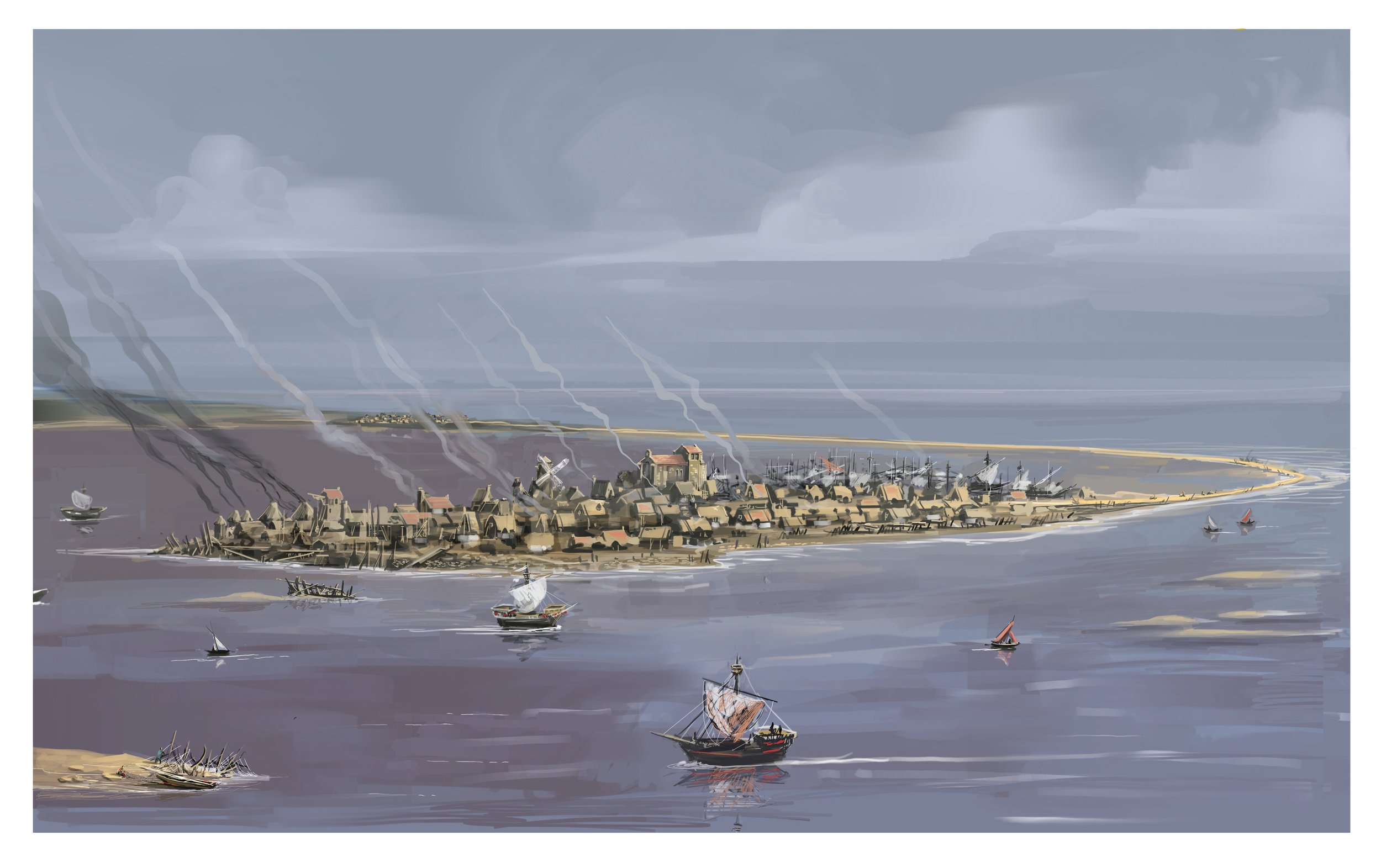Ravenser Odd: Lost town brought to life in new exhibition
LOST: An artist’s impression of Ravenser Odd by Gareth Sleightholme
By Simon Bristow, Co-Editor
The story of a lost town built on an island at the mouth of the River Humber will be told in an exhibition at Hull History Centre next month.
Ravenser Odd – which was once a more important port than neighbouring Hull and had two MPs – was a short-lived medieval town became completely submerged.
Both Ravenser Odd and Hull gained their charters from Edward I on the same day – April 1, 1299.
To mark the 725th anniversary, the exhibition Hull/Ravenser Odd: twin cities, sunken pasts will display the original Hull and Ravenser Odd charters, on loan from The National Archives.
The exhibition will also highlight existing items in the history centre’s collection (Hull’s 1299 charter, maps of medieval Hull), and bring the little-known story about the sinking of Ravenser Odd and the ascendancy of Hull to life.
The exhibition will go on display from Tuesday, March 26 and will run until Thursday, May 30.
“Despite its proximity to Hull, the story of Ravenser Odd is fairly unknown,” said Councillor Rob Pritchard, Hull City Council portfolio holder for leisure and culture.
“An understanding of the Ravenser story and its implications for the wider Humber will allow Hull people to reflect on their own 800 years of maritime history and the opportunities to explore themes around Hull’s own development.
“This exhibition will tell the story and capture the imagination of residents, children and young people in many different ways.”
Alongside the exhibition, there will be creative workshops delivered by local artists from Square Peg Hull aimed at children and young people and local communities.
A comic bringing the archival documents to life to engage young people with the history and folklore of their community has also been commissioned by Hull Maritime.
The comic will be created by local artist Gareth Sleightholme and will be the third in a series of comics produced as part of the Hull Maritime project.
1362: A Spurn Oddity will follow imaginary local school children as they discover the forgotten history of the birth and death of Ravenser Odd. It will be given out free at the exhibition and in local schools, encouraging children to see themselves as part of the ongoing history of Hull and the Humber area.
The exhibition and associated activities are underpinned by research by Dr Kathryn Maude (The National Archives) and Dr Emily Robinson (University of Sussex).
They will give a talk at the history centre about the history and folklore of Ravenser Odd on April 9 . The next day historian Phil Mathison and Dr Steve Simmons from the University of Hull will speak about their search for traces of the island. Both talks are free and open to all.



